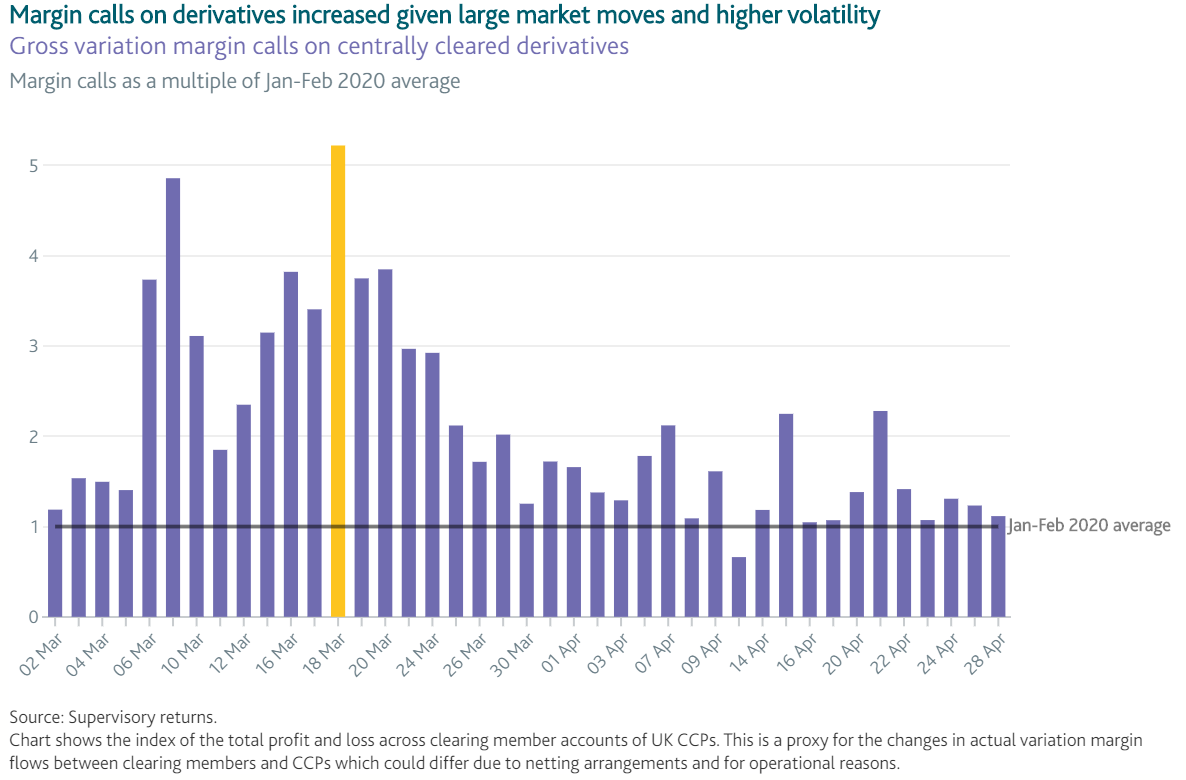As markets reacted to Covid-19 in March 2020, some markets saw their largest price moves in 30 years. Price volatility also rose sharply. This resulted in a large increase in variation margin calls and initial margin requirements.
Variation margin reflects day-to-day changes in the market value of derivatives contracts. Larger movements in market prices therefore feed through to larger amounts of variation margin. Initial margin protects against potential future changes in the market value of contracts following a counterparty default. Unprecedented changes in market prices increase the chances of larger price changes, so initial margin tends to increase with market volatility.
Daily variation margin calls by UK central counterparties (CCPs) in derivatives markets in March were around five times the average daily margin calls for January and February. This mechanically reflected the market events that had resulted from the Covid-19 shock. Variation margin calls also increased for derivatives not cleared by CCPs.

Initial margin required by UK CCPs also increased in March, with the overall increase peaking at 31% compared to the average requirement earlier in 2020. Some adjustment to the changing market conditions was to be expected. The effectiveness of the measures taken by CCPs to avoid large and unexpected increases in initial margin requirements during the March period should be considered further.
Overall, margin helped to ensure derivatives markets remained resilient throughout the recent market shock. It also resulted in a large movement of liquidity around the financial system. This contributed to a ‘dash for cash’ in March 2020, as some market participants appeared to have insufficient buffers of cash-like assets to meet actual or anticipated margin calls.
Prudent margining is an important part of risk management in the system and is not a trade-off with liquidity risk. Participants in derivatives markets should ensure their liquidity management strategies take account of the possibility that margin calls and requirements may rise significantly during periods of market turbulence.

